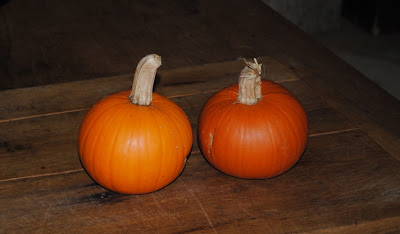We grew three varieties of pumpkins on the Lippitt Farmstead this past summer. The New England Pie Pumpkin is an adorable small pumpkin, generally between five and eight pounds. This pumpkin is my personal favorite.
The Long Island Cheese Pumpkin is a larger, buff-colored pumpkin also excellent for pies.
Although it has a pale outer skin, the flesh inside is a deep orange color.
This pumpkin has a wonderful aroma when we cut it open. Shari, interpreter in the More House, made these beautiful pies with it, and I can attest that they were delicious!
This recipe is from The Frugal Housewife by Lydia Maria Francis Child, published in 1830.
These pumpkins will keep in a cool place for a few months but not necessarily until late winter or early spring, so some of the pumpkin is dehydrated for future use. One way to do that is to slice the flesh and hang the slices in the kitchen where they will dry from the warmth of the fire. Another way is to stew the pumpkin, then spread it on a pan and leave the pan in a warm oven until the pumpkin becomes leathery and can be lifted off the pan in one piece. Pat, our interpreter in the Lippitt Farmhouse, has been preparing much of our pumpkin this way.
The third pumpkin we grew was the Connecticut Field Pumpkin.
This is the type of pumpkin typically grown nowadays for Halloween. It is a large, nicely-shaped pumpkin, perfect for a jack-o-lantern. While it can be used for cooking, it is rather plain tasting and somewhat watery.
Its real claim to fame is as an animal feed. In part two of this blog post, I'll report the result of my farm animal survey regarding the eating of pumpkin.









No comments:
Post a Comment